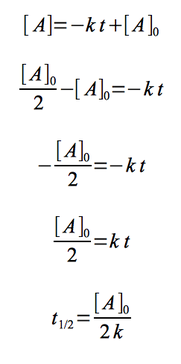Learn important concepts of the chapter
1
Rate of reaction
Rate of reaction or reaction rate is defined by how fast or slow a reaction proceeds. It is a measure of how fast a reactant is consumed or how fast a product is formed. Generally it is represented by r.
r = - = +
r = - = +
2
Average rate of reaction

The change in concentration of any of the reactants or any of the product per unit time over a specified interval of time is called the average rate of reaction. Average rate of reaction is given by r.
3
Instantaneous rate of reaction

Rate of change of concentration of any of the reactants or products at a particular instant of time is called the instantaneous rate of reaction, for that particular reaction at that instant of time.
4
Half- life period for reaction of zero order

content Text
5
Molecularity of a reaction

The number of reacting species (atoms, ions or molecules) taking part in an elementary reaction, which must collide simultaneously in order to bring about a chemical reaction is called molecularity of a reaction.
6
Integrated rate law equation for zero order reaction

content Text
7
Integrated rate law equation for First order reaction
Integrated rate law equation for 1st order reaction:
8
Half- life period for reaction of First order
or
then
[since ]
then
[since ]
9
Arrhenius Equation
The rate constant of a reaction is a function of temperature. It is related to temperature by the Arrhenius equation.
where k = rate constant
A = frequency factor or preexponential factor or Arrhenius constant.
= activation energy of the reaction (J/mole)
where k = rate constant
A = frequency factor or preexponential factor or Arrhenius constant.
= activation energy of the reaction (J/mole)
10
Collision Frequency
According to Collision theory, the reactant molecules are assumed to be hard spheres and reaction is postulated to occur when molecules collide with each other. The number of collisions per second per unit volume of the reaction mixture is known as collision frequency (Z).


